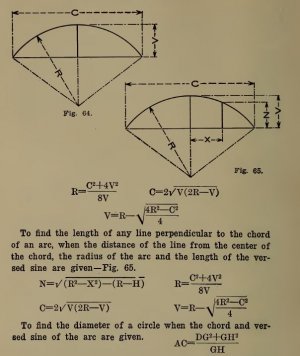- Joined
- Jul 29, 2014
- Messages
- 2,737
I have read several claims that if the lathe tool height is set too high or low there will be a diameter error. It seemed like a small effect, so to understand it I did the math.
It turns out that as an example, a 1” diameter rod turned with a tool offset vertically by, let’s say 0.01”...which seems like a very large mistake to me...gives a diameter error of 50 millionths of an inch.
The error increases as the tool offset increases and as the work nominal diameter decreases.
So a 1/8” diameter rod with the same 0.01 tool height error yields a cut diameter error of 0.0004. Yep, 4 tenths.
Clearly there are more compelling reasons to set a tool on center than induced diameter errors.
It turns out that as an example, a 1” diameter rod turned with a tool offset vertically by, let’s say 0.01”...which seems like a very large mistake to me...gives a diameter error of 50 millionths of an inch.
The error increases as the tool offset increases and as the work nominal diameter decreases.
So a 1/8” diameter rod with the same 0.01 tool height error yields a cut diameter error of 0.0004. Yep, 4 tenths.
Clearly there are more compelling reasons to set a tool on center than induced diameter errors.


